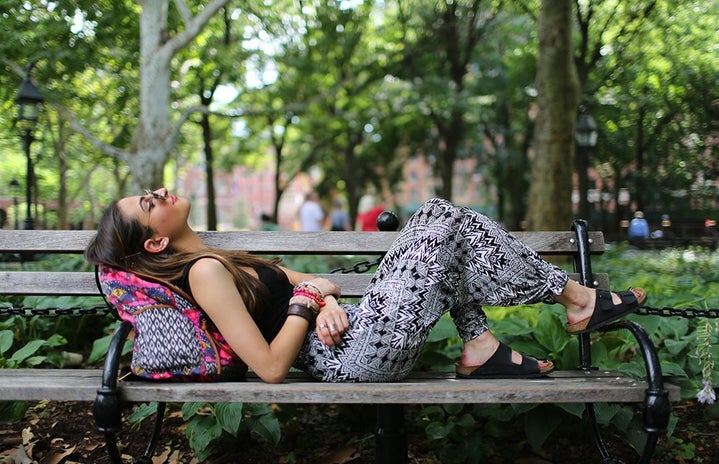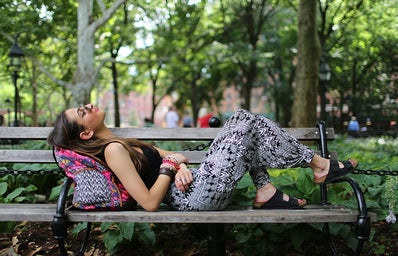Cities across the globe are making changes to the ways that public spaces are designed. To the normal passerby, these changes don’t make much of a difference. You may have noticed more benches with armrests or metal pieces added to stone walls seemingly to create individual seats. However, if we look at it through a different perspective, we can see how detrimental these changes are. Public spaces following this design structure are part of a phenomenon called “Hostile Architecture.”
No, you cannot lay on this stone wall (Boston, MA) from r/HostileArchitecture
Hostile architecture by Madison Square Park: benches built at an incline, rendering sleep for houseless people impossible ???????????? pic.twitter.com/ZnxkMAfKLB
— shonda rhimes wrote crossroads (@jersing) August 11, 2017
Hostile architecture is an intentional design strategy that prohibits certain behavior in urban spaces. It is most commonly used to prevent homeless people from sleeping in public spaces. These design methods discriminate against an already at-risk population. It is done in such a subtle and strategic way that most won’t even notice how detrimental these changes are.
I like to think that we are better than this.
Architecture that discriminates against an already marginalized population is the laziest way to address the issue of homelessness. If we, as a public health provider, resort to doing this, what kind of example are we setting? pic.twitter.com/7akZlcKhIh
— Mark Iantorno (@iantoryes) March 29, 2018
According to the Council of Economic Advisors, around 550,000 people experience homelessness in a given night, and nearly 1.4 million people will spend time in a shelter in a year. Even with this high of a homelessness rate, cities are choosing to punish homelessness rather to create solutions to the issue of homelessness. Cities need to do more to solve the problem and help people in such a vulnerable state.
#Paris large stones placed under bridge to stop refugees from sheltering or sleeping near the official camp #defensivearchitecture #borders pic.twitter.com/YAV1nm0c49
— Calais Solidarity (@calaisolidarity) February 12, 2017
Unfortunately, this phenomenon isn’t found only in the US, but across the globe. With the rise of homelessness due to the refugee crisis, more people find themselves sleeping on the streets in many European cities. City planners are placing large rocks or spikes in open spaces to prevent people from sleeping in those areas. With so many shelters having so few beds, more people are forced onto the streets. Hostile architecture further limits the space in which people can sleep. This is a humanitarian issue. With cities hurting the homeless population in such a subtle way, this behavior is going severely unnoticed.
It’s outrageous that we as a society are standing by while hundreds of thousands of people are sleeping on the street. It’s even worse that governments are choosing to punish this behavior rather than enact policies that will help these people. I hope in the future the money that is spent to create this architecture will go to creating housing or other solutions to the homelessness crisis in the world. People shouldn’t be treated as cosmetic issues for cities. Their lives matter and the harm being done to them should be stopped.
Want to keep up with HCBU? Make sure to like us on Facebook, follow us on Instagram, check out our Pinterest board, and read our latest Tweets!



